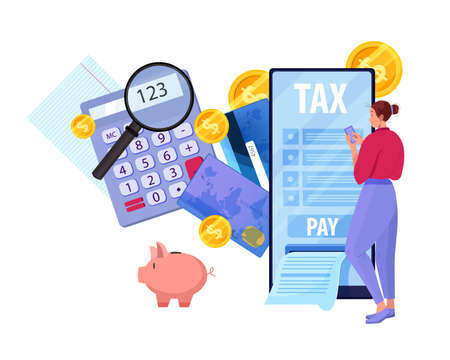Understanding Automated Savings
When it comes to managing your finances in the U.S., automated savings have become a popular and practical way to help you reach your money goals. But what exactly are automated savings, and how do they make budgeting every month easier?
What Are Automated Savings?
Automated savings is a system where you set up your bank account or a financial app to move a certain amount of money from your checking account to your savings account automatically on a regular schedule—usually every payday or once a month. This “set it and forget it” approach means you’re saving money without having to think about it each time.
How Automated Savings Work
| Step | Description | Common Tools in the U.S. |
|---|---|---|
| 1. Choose an Amount | Decide how much you want to save automatically each month (for example, $50, $100, or more). | Your bank’s online banking platform, apps like Chime, Ally, or Capital One 360 |
| 2. Set Up Automatic Transfers | Schedule recurring transfers from checking to savings on payday or another regular date. | Direct deposit splitting, recurring transfer features in mobile apps |
| 3. Monitor Progress | Check your savings balance regularly and adjust the amount as needed based on your budget. | Bank statements, app notifications, monthly budget reviews |
Why Automated Savings Make Budgeting Easier
Automated savings can take the stress out of remembering to set aside money each month. By making saving automatic, you’re less likely to spend what you intended to save. Plus, most banks and budgeting apps in the U.S. make it simple to get started with just a few clicks. This helps create good habits and makes reaching goals—like building an emergency fund or planning for a vacation—more realistic.
Key Benefits of Automated Savings:
- No Extra Effort Needed: Money moves without you having to do anything after the initial setup.
- Helps Avoid Temptation: Funds are saved before you have a chance to spend them impulsively.
- Keeps You Consistent: Regular transfers keep you on track toward your goals even if life gets busy.
- Easily Adjustable: If your budget changes, most platforms allow you to update the transfer amount or frequency anytime.
If you want to integrate automated savings with your monthly budget, understanding how these systems work is the first step toward building smarter financial habits that fit right into everyday American life.
2. Evaluating Your Monthly Budget
Why Reviewing Your Budget Matters
Before you set up automated savings, its important to take a close look at your current monthly budget. This helps you figure out exactly how much money you can comfortably set aside without straining your finances. By understanding your income and expenses, you can avoid overdrafts and make sure your savings goals are realistic.
Steps to Review Your Monthly Budget
Step 1: List All Sources of Income
Start by writing down every source of income you receive each month. This could include:
- Your main job salary (after taxes)
- Any side gigs or freelance work
- Child support, alimony, or government benefits
- Other regular payments
Step 2: Track Your Monthly Expenses
Next, make a list of all your monthly expenses. Be honest and thorough—include both fixed costs (like rent) and variable costs (like groceries or eating out). Here’s a simple table to help you get started:
| Category | Monthly Amount ($) |
|---|---|
| Housing (rent/mortgage) | |
| Utilities (electricity, water, internet) | |
| Groceries | |
| Transportation (car payment, gas, public transit) | |
| Insurance (health, auto, renters) | |
| Debt Payments (credit cards, loans) | |
| Entertainment & Dining Out | |
| Savings & Investments | |
| Other Expenses (pets, childcare, etc.) |
Step 3: Calculate Your Disposable Income
Subtract your total monthly expenses from your total monthly income. The amount left over is your disposable income. This is the money you can use for automated savings or other financial goals.
Disposable Income Formula:
Total Monthly Income – Total Monthly Expenses = Disposable Income
Step 4: Decide How Much to Automate for Savings
A good rule of thumb is to start small if youre new to automated savings. You can always increase the amount as you get more comfortable. Consider automating a percentage of your disposable income—many Americans find that starting with 5% to 10% works well without impacting their daily life too much.

3. Selecting the Right Savings Tools
When you’re ready to integrate automated savings into your monthly budget, picking the right tool can make all the difference. With so many apps and banking platforms out there, it’s important to choose one that fits your financial habits and goals. In the U.S., several popular options stand out for their reliable automation features and user-friendly experience.
Comparing Popular American Savings Platforms
Here’s a quick comparison of some top savings tools that make automating your savings easy and effective:
| App/Platform | Main Automation Features | Best For | Fees |
|---|---|---|---|
| Chime | Automatic round-ups, scheduled transfers, Save When You Get Paid feature | Beginner savers, those who want simple automation directly with a checking account | No monthly fees |
| Ally Bank | Recurring transfers, “Surprise Savings” tool analyzes spending to move extra money to savings automatically | People looking for higher interest rates and advanced automation options | No monthly fees |
| Capital One 360 | Automatic transfers on customizable schedules, ability to create multiple savings “buckets” for different goals | Savers with multiple goals, families managing joint budgets | No monthly fees |
| Digit (now Oportun) | Saves small amounts automatically based on your spending patterns, helps reach specific targets like emergency funds or travel budgets | Those who want “set-it-and-forget-it” style automation with goal tracking | $5/month after free trial |
| Acorns | Rounds up purchases and invests the spare change; also offers recurring deposits and retirement accounts (IRAs) | Savers interested in micro-investing as well as saving automatically | $3-$5/month depending on plan |
| Wells Fargo, Chase, Bank of America (Traditional Banks) | Scheduled automatic transfers from checking to savings; some offer “Keep the Change” or round-up programs | Loyal customers who prefer established banks with branch access and broad services | Varies—may have monthly fees without qualifying activities |
What to Look For in an Automated Savings Tool?
- User-Friendly Interface: Make sure the app or bank is easy to navigate so you can set up rules quickly.
- No Hidden Fees: Always check if there are any monthly charges or minimum balance requirements that could eat into your savings.
- Customizable Automation: Look for tools that let you set specific dates, amounts, or rules based on your paycheck schedule.
- Savings Goals: Some platforms let you label or separate funds for different purposes—like vacations or emergency funds—which can help keep you motivated.
A Quick Tip for U.S. Savers:
If you get paid bi-weekly or monthly, try syncing your automated transfers to go through right after payday. That way, you’re less likely to spend what you intended to save!
The Bottom Line on Tools:
The best tool is the one you’ll actually use consistently. Whether you prefer a dedicated savings app, an online bank with smart features, or traditional banks’ built-in automations, make sure it integrates smoothly with your monthly budgeting routine. This way, growing your savings becomes a habit—not a hassle.
4. Setting Up Automated Transfers
Automating your savings is a powerful way to make progress toward your financial goals without having to think about it every month. By setting up automated transfers, you’re building good habits and ensuring your savings grow consistently. Here’s a simple step-by-step guide to help you get started with integrating automated savings into your monthly budget:
Step 1: Review Your Monthly Budget
First, take a look at your current monthly budget. Identify how much money you can comfortably set aside for savings each month without affecting your necessary expenses like rent, utilities, groceries, and transportation.
| Expense Category | Monthly Amount |
|---|---|
| Rent/Mortgage | $1,200 |
| Utilities | $150 |
| Groceries | $400 |
| Transportation | $120 |
| Savings (Goal) | $200 |
| Other Expenses | $330 |
| Total Income | $2,400 |
Step 2: Choose Your Savings Account
Select a dedicated savings account where you want to transfer funds automatically. This could be a high-yield savings account or an online savings account that offers better interest rates than traditional banks.
Step 3: Set Up Automated Transfers Online or via Mobile App
Most U.S. banks and credit unions offer easy options to set up recurring transfers between your checking and savings accounts. Log in to your online banking portal or mobile app and look for options such as “Transfer & Pay” or “Scheduled Transfers.” Select the amount, the accounts involved, and how often you want the transfer to occur—usually once per month, timed just after payday.
Example Setup:
| From Account | To Account | Amount | Date/Frequency |
|---|---|---|---|
| Checking Account | Savings Account | $200 | 1st of every month |
Step 4: Monitor and Adjust As Needed
After setting up your automatic transfers, keep an eye on your accounts during the first few months. If you find that you’re cutting it too close with other bills or if you get a raise and can save more, adjust the transfer amount accordingly within your online banking settings.
Pro Tip:
If possible, align your automated transfer date with your payday so you “pay yourself first.” This makes saving even easier and helps reduce the temptation to spend what you could be saving.
5. Tracking Progress and Making Adjustments
When you integrate automated savings with your monthly budget, its important to keep an eye on how things are going. By tracking your progress, you can make sure youre moving toward your financial goals and make changes if life throws you a curveball. Here’s how you can stay on top of your savings plan and keep your motivation high.
Monitor Your Savings Goals
Regularly checking in on your savings is key to staying informed and confident about your money. Most banks and budgeting apps let you see your balances and track your savings automatically. Set a time each month—like after you pay your bills—to review how much you’ve saved compared to your goal. This helps you see what’s working and where you might need to step up.
| Savings Goal | Monthly Target | Current Balance | On Track? |
|---|---|---|---|
| Emergency Fund | $200 | $1,800 | Yes |
| Vacation Fund | $100 | $450 | No (behind by $50) |
| New Car Fund | $150 | $1,050 | Yes |
Adjust Contribution Amounts as Needed
If you get a raise, pick up a side gig, or find yourself with extra expenses one month, don’t be afraid to adjust how much you’re putting into each savings goal. Flexibility is one of the biggest benefits of automated savings—most online banking tools let you change transfer amounts or dates with just a few clicks. If you’re ahead of schedule, consider bumping up your contributions; if money’s tight, it’s okay to scale back temporarily.
How to Make Adjustments:
- Log in to your bank or app and review automatic transfers.
- Edit the amount or frequency based on your current budget.
- Set reminders to revisit these settings every few months.
Stay Motivated Over Time
Sticking with automated savings gets easier when you celebrate small wins. Mark milestones—like hitting half of your emergency fund—as victories. Share progress with a friend or family member, or reward yourself with something small (and affordable) when you meet a target. Keeping visual reminders, like progress bars in an app or a chart on the fridge, can also help keep the momentum going.
6. Integrating Savings with Financial Goals
Automated savings make it easier than ever to align your monthly budget with your bigger financial goals. By connecting automatic transfers to specific goals—like building an emergency fund, saving for a dream vacation, or preparing for retirement—you can steadily work toward these milestones without needing to remember to move money manually each month.
Linking Automated Savings to Your Goals
Most banks and budgeting apps let you set up separate savings accounts or “buckets” for different purposes. Once you identify your goals, you can direct specific amounts from each paycheck into those accounts automatically. Here’s how this might look in practice:
| Financial Goal | Monthly Automated Transfer ($) | Account Type/Label |
|---|---|---|
| Emergency Fund | $100 | Savings (Emergency) |
| Vacation | $50 | Savings (Vacation) |
| Retirement | $200 | 401(k) or IRA |
Tips for Staying on Track
- Name your accounts: Give each savings account a clear label—like “Hawaii Trip 2025” or “Rainy Day Fund”—to stay motivated and organized.
- Start small if needed: Even $20 per goal per month adds up over time. Increase the amount as your budget allows.
- Review and adjust regularly: Check your progress every few months and tweak your automated transfers if your priorities change.
- Use bank tools: Many U.S. banks offer goal trackers that show your progress visually, making it easier to stay engaged with your savings plan.
Why Automated Savings Work for Big Goals
By integrating automated savings into your monthly budget, you remove the guesswork and temptation to spend that money elsewhere. Over time, these consistent contributions help you build financial security and make your dreams more attainable—whether it’s peace of mind during emergencies, a memorable family trip, or a comfortable retirement.


